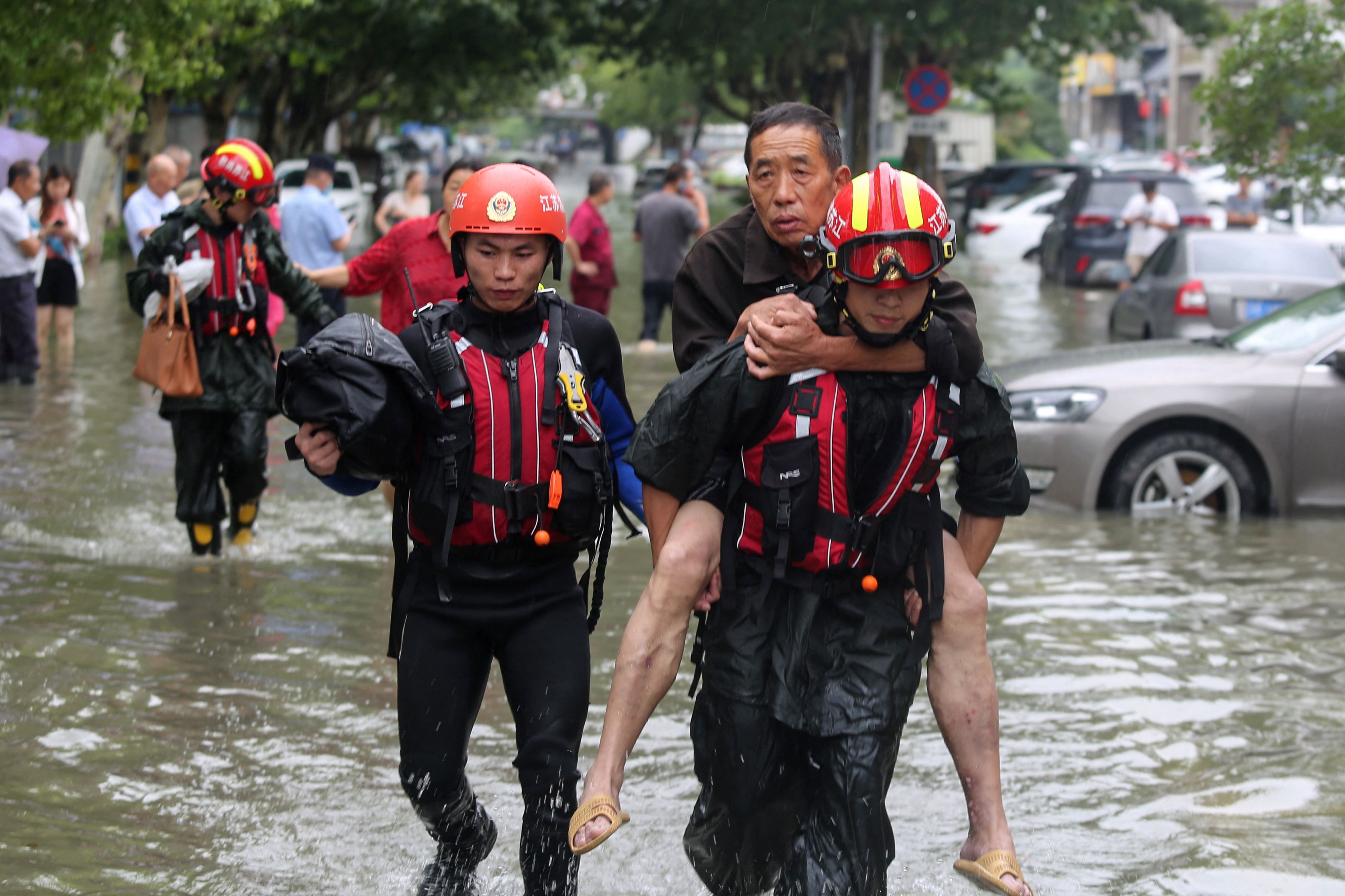China typhoons create latest supply chain threat as ports shut
Sign up now: Get ST's newsletters delivered to your inbox

Officials predict more typhoons will hit China this month.
PHOTO: AFP
Follow topic:
SINGAPORE (BLOOMBERG) - Extreme weather in China is becoming the latest challenge to global supply chains, as a heavy typhoon season threatens to further delay goods stuck at some of the world's busiest container ports.
Yantian port in southern China's export and industrial hub of Shenzhen stopped drop-off services of containers on Tuesday (August 3) night due to a typhoon alert, the port said on its official social media account.
Just two weeks earlier, Shanghai's Yangshan mega-terminal facility and nearby ports evacuated ships as Typhoon In-Fa slammed into the coast, bringing widespread flooding and toppling containers stowed in the hold of a bulk carrier travelling to the US.
Heavy rain, high winds and flooding this year are tying up global trade as the already overstretched shipping industry struggles to recover from disruptions ranging from Covid-19 outbreaks to geopolitical unrest.
There may be worse to come, as officials predict more typhoons will hit China this month. "Each time a port is forced to close, containers continue to pile up, adding to existing delays," said Mr Alex Hersham, chief executive of digital freight-forwarder Zencargo.
"And as this season is expected to be heavier than usual for tropical cyclones, we can expect more delays like this."
Supply chains have faced a string of bad luck this year. A Covid-19 outbreak among port staff was to blame for a partial closing of Yantian in May, leading to container goods piling up for a month.
As ships diverted away from southern China, some factories in the nearby manufacturing hub of Guangdong shut down because of excess inventory that couldn't be exported, according to analysts and logistics intelligence firm project44.
"The impact of Yantian's closure was unprecedented on the supply chain because it serves one of the world's largest manufacturing bases," said Mr Salmon Aidan Lee, head of polyesters at consultant Wood Mackenzie.
"If we have a few more typhoons that come our way, and knock down production a few days each time, this problem will get worse."
While the average waiting time for a container to be exported at Yantian has dropped to five days from 25 in June, and operations were scheduled to resume at the port Wednesday evening after the typhoon alert was downgraded, the situation could easily worsen again if weather-related delays at other Chinese ports build up, said Mr Hersham.
Typhoon In-Fa also impacted factory operations in eastern China, while major ports along the Yangtze River, the country's busiest inland waterway, halted operations last week, the Shanghai Shipping Exchange said in a July 30 note.
Torrential rains and flooding have affected flows of commodities like oil and coal, the company said. The disruptions are driving the cost of shipping a 40-foot box from China to the US to record levels above US$10,000, according to maritime consultant Drewry.
Ultimately, the snarls will add to inflation, said Lee, who predicts US consumers will have to pay about 20 per cent more for Christmas presents - from toys to furniture.

